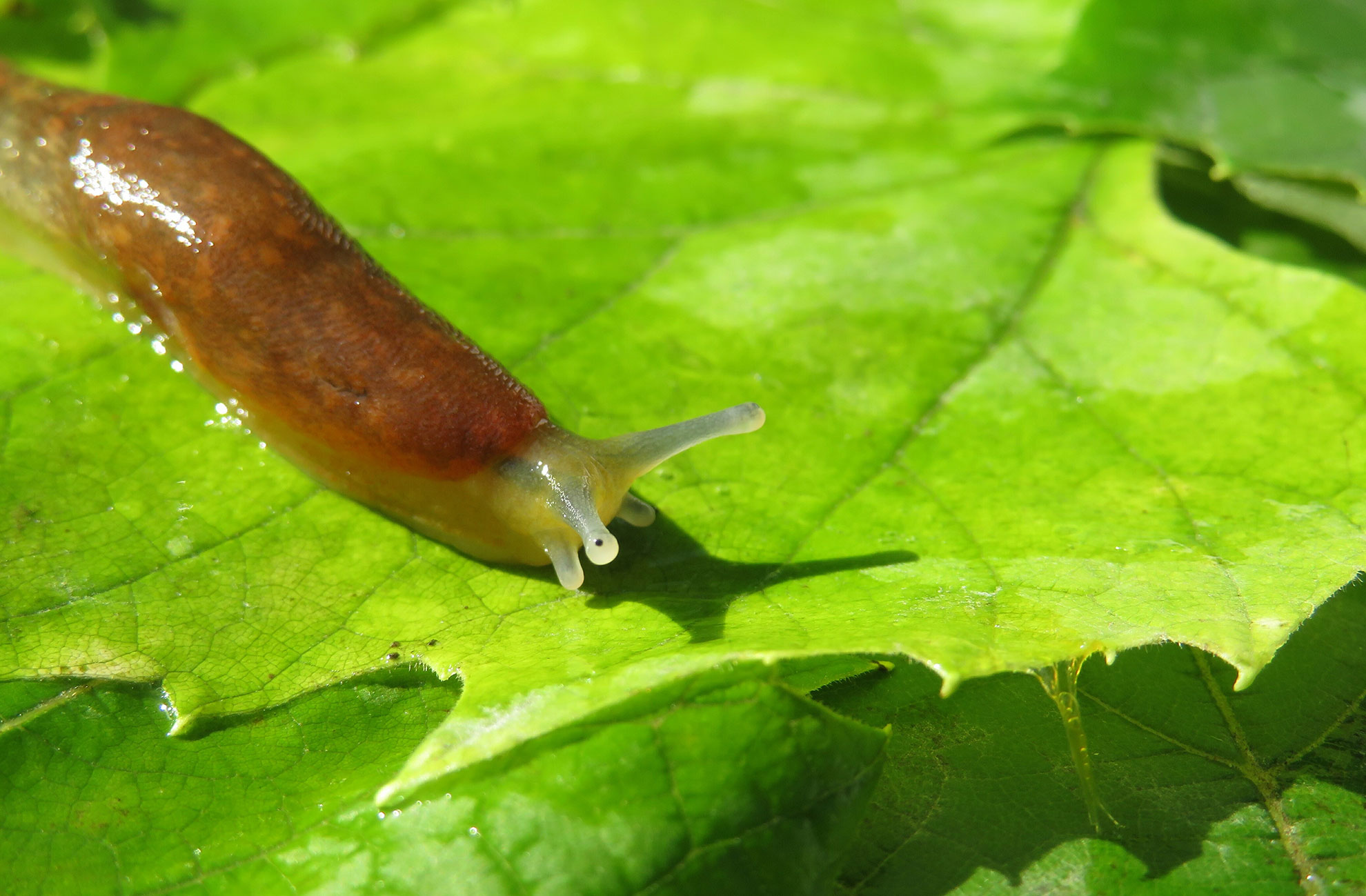A discovery inspired by the humble slug may soon be the answer to managing painful oral lesions associated with chronic inflammatory conditions and sealing surgical wounds in the mouth.
Scientists at Harvard had been searching for a biomaterial that would hold up in wet conditions — that’s when they turned to Mother Nature for inspiration. When slugs feel threatened, they secrete a sticky mucus that protects them from predators. This mucus has strong mechanical properties allowing it to stick to wet surfaces and stretch about 10 to 15 times its original length.
Inspired by these properties, researchers in the Mooney Lab of the Harvard John A. Paulson School of Engineering and Applied Sciences, and the Wyss Institute for Biologically Inspired Engineering, developed a strong adhesive patch composed of 90 percent water from a natural polymer derived from algae, and present in dental impression materials. The adhesive patch will work on wet surfaces and is not toxic to humans. After finding it successfully stuck to animal tissues, acting as a surgical wound sealing biomaterial in lab testing, their findings were published in Science in 2017.
Now, its applications for oral health and treatment of painful oral lesions may be coming soon to a dental office near you. David Tiansui Wu, D.M.Sc. ’23, instructor of oral medicine, infection, and immunity, has been involved in the development of an adhesive hydrogel patch that can seal wounds and act as an intraoral Band-Aid capable of strong adhesion in wet environments and on dynamically moving surfaces. His work as a postdoctoral research fellow and periodontology resident at Harvard School of Dental Medicine first exposed him to the slug-inspired biomaterial, and connections he made in the Mooney Lab fueled his interest in developing a product for use in dental medicine.
“When I started at Harvard University, I had the privilege of meeting Professor David Mooney, who is a world-renowned expert in tissue engineering and biomaterials and decided to start my doctoral thesis at the lab,” Wu said. “At that time, Benjamin Freedman, a postdoctoral fellow at the lab, was working on the preclinical translation of the tough adhesive hydrogel technology for diverse medical and health care applications, such as hemostasis in general surgery, tendon repair in orthopedic surgery, and wound sealing in dermatology. As a periodontist in training, the possibility of bringing this revolutionary technology from benchtop to patient care appeared to be a great opportunity to solve unmet needs in our field,” Wu said.
“This technology can be applied to seal surgical sites such as gingival graft harvest sites, extraction sockets, bone augmentation surgical sites, and much more.”
David Tiansui Wu
Wu collaborated with Freedman to advance the preclinical testing and development of the technology and expand its functionality with drug-release capabilities that would allow the hydrogel to deliver a range of medications relevant for dental, oral, and craniofacial applications.
In parallel, Wu and Freedman began working with other faculty collaborators at the Massachusetts General Hospital departments of Oral and Maxillofacial Surgery and of Dermatology respectively, including Fernando Guastaldi and Yakir Levin, to conduct preclinical validation of the adhesive technology in oral applications.
Together, they developed what they call “Dental Tough Adhesive (DenTAl).” Their findings were published in a landmark paper in the Journal of Dental Research, paving the way for the technology’s clinical translation to one day impact patient care.
Chronic inflammatory conditions, such as oral lichen planus and recurrent canker sores, “negatively affect patients’ quality of life,” said Wu. “Current treatment approaches are mainly palliative and often ineffective due to inadequate contact time of the therapeutic agent with the lesions.
“This novel technology has the potential to impact several areas in dentistry, including applications in oral wound repair and regeneration, and drug delivery. In periodontics and oral surgery, this technology can be applied to seal surgical sites such as gingival graft harvest sites, extraction sockets, bone augmentation surgical sites, and much more. Our vision is to one day develop sutureless wound repair,” he added.
This innovative technology is now being translated into the clinical arena through a license for continued development beyond the laboratory. The multidisciplinary team is taking the next steps to bring the technology into the dental office by obtaining clearance from regulatory authorities such as the U.S. Food and Drug Administration.
“My goal as a clinician, scientist, and innovator is basically to bridge the gap between benchtop research and the clinical arena,” Wu said. “We are excited to translate this technology to impact millions of patients and their dentists in improving their oral health.”
Source link

